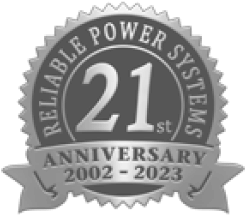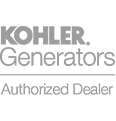If your home or business isn’t able to connect to a municipal natural gas line to tap into the impressive benefits, don’t worry: our team of professionals can set your property up with a 500 gallon underground propane tank so that all of your on-site appliances can be powered by a comparable fuel source. Our licensed and certified technicians can install a propane tank with minimal intrusion upon your daily routine.
Call Reliable Electrical Services at (561) 408-5147 to schedule underground propane tank installation services.
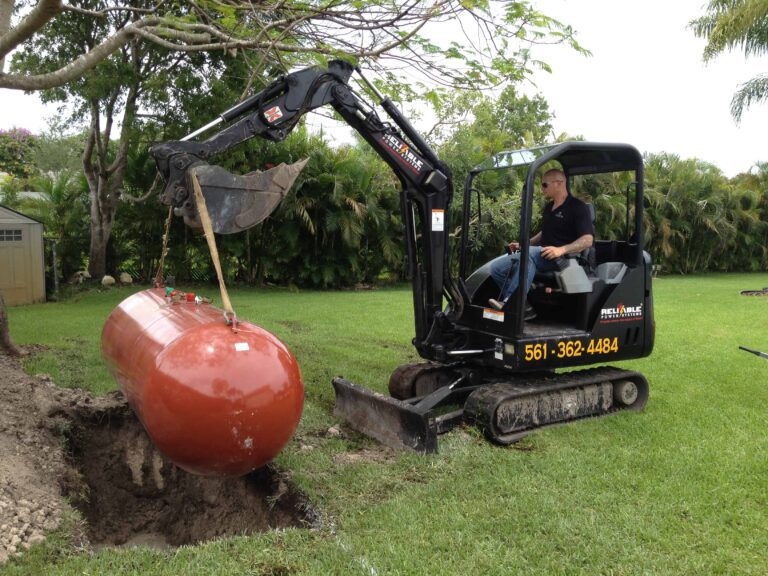
Why Install an Underground Propane Tank?
Underground propane tanks are out of sight, out of mind! You never have to worry about an eyesore—the only visible aspect of the tank is the lid used for filling.
The tanks are durable, maintenance free, and usually, last 30 to 40 years (your yard’s soil type can impact the tank’s life expectancy). They also safely and effectively provide the connecting lines to any appliances you want your backyard to include.
Propane energy is:
- Cleaner
- More Economical
- Safer
- More Environmentally Sustainable
- More Efficient
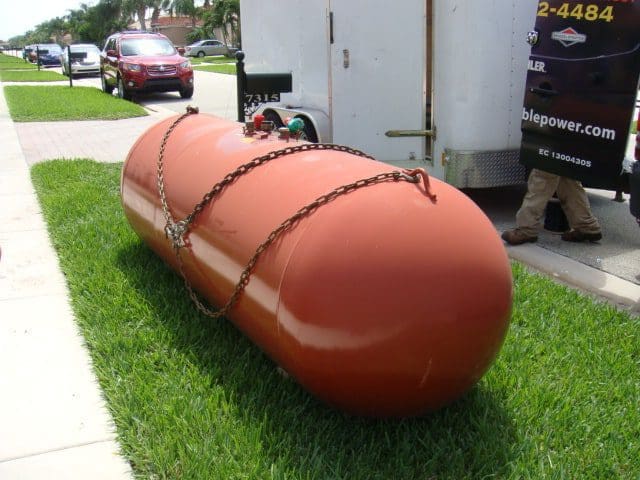
How We Install Liquid Propane Tanks for Generators
Many of our customers have no open areas for us to install a 500 gallon underground propane tank. This can be due to small property lines, underground utilities or other obstructions. Often we will install the tank right under your existing driveway.
This type of installation results in a streamlined propane tank that will increase your home’s value and provide you with the essential fuel you need. When we install the tanks we do restore the original area back to good condition. This often includes restoring pavers or driveway surfaces.
Here’s how the typical tank installation works:
- We use a backhoe to dig a hole in preparation for placement of the LP tank. For a 500-gallon tank, the average size hole is 10 feet by 4 feet.
- In some installations we will then dig a driveway trench so that underground gas piping can run from the tank to the generator.
- Next, we put the tank in the hole and fill with a backhoe to cover up the tank. We then replace the sod as well as the driveway. When finished, all that will be visible will be an 18-inch cover to the gas line.
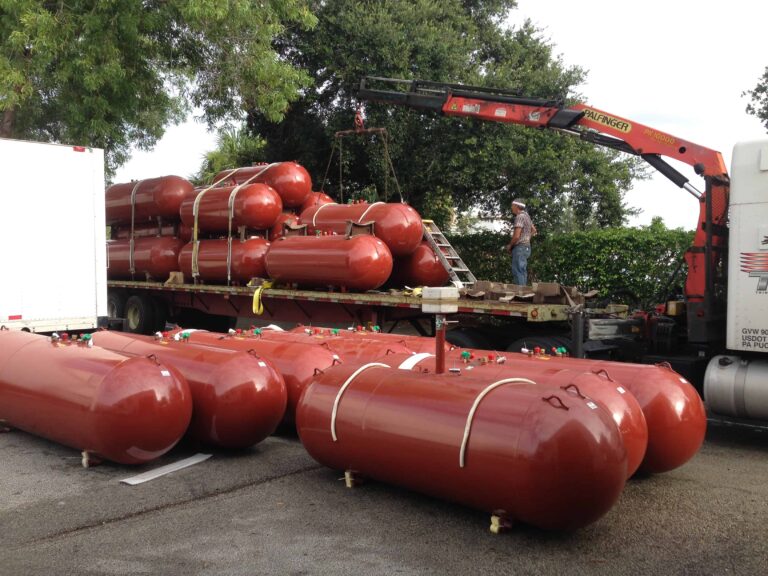
Propane Tank Rules and Regulations
Our team can help determine the proper placement of your 500 gallon buried propane tank. We are experienced in dealing with the federal, state, and local ordinances and regulations that must be observed during the underground propane tank installation process. These include:
Tanks under 125 gallons:
- Must be at least 10 feet from a window air conditioner
- Must be placed a minimum of 5 feet from a crawl space opening
Tanks 125-500 gallons capacity:
- Must be placed a minimum of 10 feet from a building
- Must be at least 10 feet from a line of adjoining property
Tanks up to 2,000 gallons capacity:
- Must be placed a minimum of 25 feet from the building
- No part of an underground tank of this size shall be less than 10 feet from a building or line of adjoining property
Call Reliable Electrical Services at (561) 408-5147 to schedule underground propane tank installation.
Pros and Cons of an Underground Propane Tank
There are many advantages of installing an underground propane tank:
- Installation. An unground tank is relatively easy to install—usually taking around 3-4 hours.
- Safe. Propane is a safe substance, meaning any leaks (although unlikely) would not harm the local water or soil.
- Appearance. Enjoy the convenience of a propane tank without filling your yard with an eyesore.
- Temperature. No matter what the temperature outside is, the surrounding earth will insulate your tank.
- Security. A visible above-ground tank can be susceptible to vandalism, making it less desirable for property owners in high-crime areas.
While there are many advantages to an underground propane tank, there are a few disadvantages as well:
- Initial Cost. Underground propane tanks do cost a bit more because of the excavation and labor during the installation process.
- Maintenance. Above-ground propane tanks are generally easier to maintain than underground units.
How to Size a Propane Tank
- Since you already know the size generator you want installed (or already have installed), you now need to find out how much propane the generator uses an hour. Most propane generators come with documents that explain how many gallons it uses per hour to create the amount of electricity it produces. You could also call the manufacturer to gather that information.
- Then, you have to try and estimate the amount of electricity you plan on using and how many hours you think you’ll be running the generator. If you only plan on using your generator as a back up power source, the best you can come up with will be a ball park figure. However, if you think you will be using it more extensively, you should try to determine as close a number as possible.
- With those two amounts figured out, it’s easy to determine how much fuel you will need. Multiply how much fuel your generator uses per hour by how many hours you plan on using your generator. Example: If you want to power a home for at least 48 hours with a generator that uses 2 gallons of propane per hour, you will need at least 96 gallons. This tells you, then, that you need a tank that’s at least 100 gallons in size.
Read More: What is the Quietest Whole-House Generator Available on the Market?
500 GALLON LP TANK INSTALLATION
A 500 gallon LP tank can be used for an all-propane home, or homes that require a lot of heat. If you are looking for a propane tank to be installed on a commercial property, these 500 gallon tanks are good for that too. Many restaurants that use propane to cook get a lot of use out of these tanks. Companies that require high amounts of heat to process certain substances – like tar – can also use this type of fuel.
Features of a 500 Gallon LP Tank
- It’s an excellent tank for homeowners and families that have higher than average usages.
- Though it is considered a 500 gallon tank, it holds about 400 gallons when it’s full.
- They typically weigh about 950 pounds.
- They can be installed above ground or underground depending on what is most convenient for you.
- It has 36,600,000 BTU when full (at 80%).
- 500 gallon tanks are available for temporary installations.
- If you choose to install it underground, an anode bag is included
- For tanks going underground they include high potential magnesium for protection and sand backfill to protect underground coating.
- They must be at least ten feet away from the building.
- People who own propane tanks have the luxury of picking their own supplier. This means that every time they fill their tank they can get a different price and save money as opposed to already having one set supplier and getting the same rates.
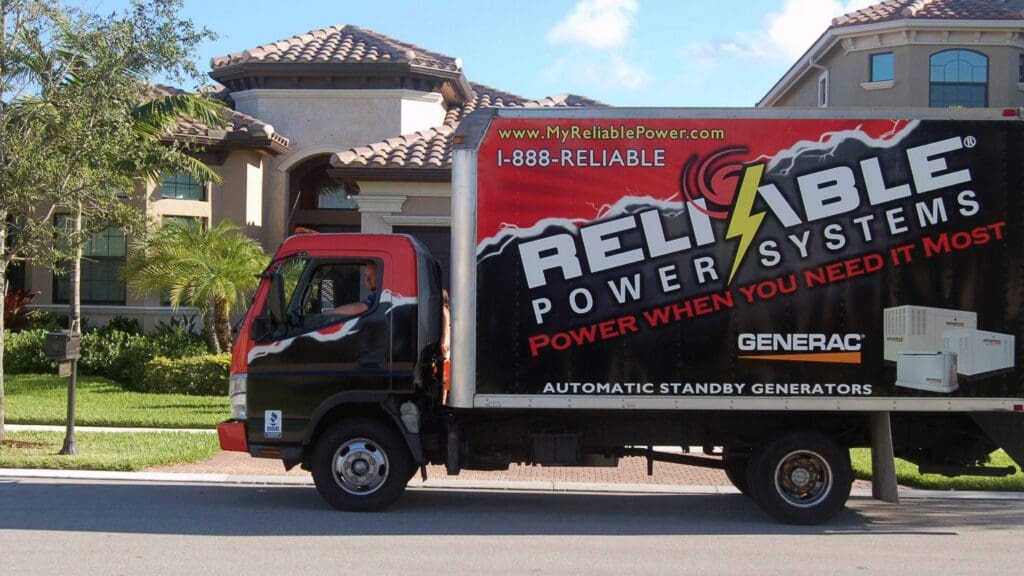
Professional Underground Propane Tank Installation Services
Considering underground propane tank installation in Broward County, Palm Beach County, or the surrounding areas? Your home or business will run smoother than ever when you have gas power to expand your possibility for modernization and improvement.
Call Reliable Electrical Services at (561) 408-5147 to schedule underground propane tank installation.
Our Service Area
- Broward County Service Area: Coconut Creek, Coral Springs, Davie, Deerfield Beach, Heron Bay, Hillsboro Beach, Hollywood, Las Olas Isles, Lauderdale-By-The-Sea, Lighthouse Point, North Lauderdale, Oakland Park, Parkland, Plantation, Poinsettia Heights, Pompano Beach, Rio Vista, Sailboat Bend, Sea Ranch Lakes, Southwest Ranches, Sunrise, Victoria Park, Weston, Wilton Manors, and surrounding areas
- Miami Dade Service Area: Aventura, Bal Harbour, Bay Harbor Islands, Coconut Grove, Coral Gables, Golden Beach, Hibiscus Island, La Gorce Island, Miami, Miami Beach, Miami Shores Village, Miami Springs, North Bay Village, North Miami, Pinecrest, South Miami, Star Island, Sunset Island, Venetian Island, and the surrounding areas
- Palm Beach Service Area: Jupiter Inlet Colony, Jupiter Island, Lake Worth, Manalapan, North Palm Beach, Ocean Ridge, Palm Beach, Palm Beach Gardens, Palm Springs, Royal Palm Beach, South Palm Beach, Tequesta, West Boca Raton, West Boynton Beach, West Delray Beach, West Palm Beach, and the surrounding areas


